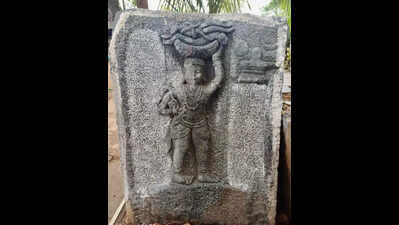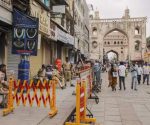ASI unearths 5 inscriptions, illuminating centuries of history | Hyderabad News

Hyderabad: The Archaeological Survey of India (ASI) has discovered five significant inscriptions across India and Sri Lanka, offering new insights into historical events, social customs, and religious practices spanning several centuries. Among the most striking is a 16th century Kannada inscription unearthed near the Sru Chandrasekhara temple in Guttala, Haveri district in Karnataka, which recorded the deaths of 6,307 people during a catastrophic drought in 1539 CE.According to K Muniratnam Reddy of the ASI’s epigraphy division, the sculpted stone slab—dated Aug 18, 1539—documents the mass burial of the deceased, carried out by Marulaiah Odeya, son of Nanideva Odeya. Using baskets (jhalle), he transported the bodies in an act of devotion to the deity Basavesvara and to earn religious merit on behalf of the local ruler, Timmarasa Svami. Inscribed in Kannada, the record highlights the devastating human toll of the drought within a defined territorial unit (sime) and stands out as a rare quantified account of a historical climatic disaster.Rich cultural themesIn Andhra Pradesh, a 13th century trilingual inscription discovered in Gudimetla village in Krishna district records a land grant and tax remission by Pridhvisetti, a merchant guild leader. The donation, made in honour of the deity Mulasthana Mallikarjjuna Mahadeva, was intended to support temple rituals and honour the Chagi chiefs, Ganapaya and Dorayarajulu.From Jharkhand, a 10th century inscription engraved on a Tara Devi image in Danto Khurd village in Hazaribagh district, reveals that a royal official, Pranabha, commissioned the sculpture in memory of his parents and teacher. Despite partial damage, the slab preserves the sacred dharani mantra ‘ye dharma hetu,’ signifying deep religious intent.In the Nallamala forest region of Prakasam district in AP, a 1518 CE Telugu inscription commemorates the construction of a well and sluice for temple lands at Sriparvata. It was commissioned by Velanga Parvatanayani and names Kemideva, the agent of Siddha Bhikshavritti Ayyamgaru, the head of a Virasaiva monastery in Srisailam.Meanwhile, in Sri Lanka’s Wilpattu National Park, an eighth century Sanskrit inscription found at Pomparippuwa and carved in early Nagari script refers to a goddess and the term ‘kirtti’ (victory). Though damaged, the inscription affirms the site’s status as a Buddhist pilgrimage centre during the early medieval period.Experts say these remarkable finds, documented by the ASI’s epigraphy division, deepen understanding of the subcontinent’s religious devotion, administrative traditions and social philanthropy.
















